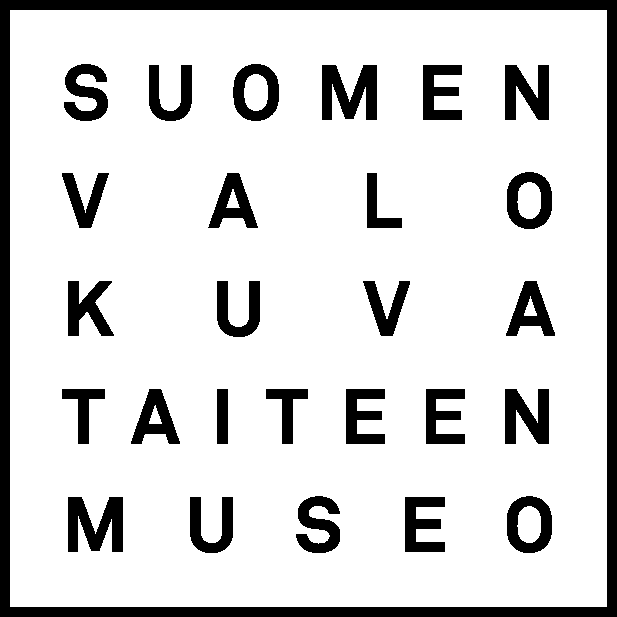1. Helsinki, Finland, 2002
This picture was taken in the parking lot of the Helsinki City Museum, where the top of a tree had splintered and been left to dangle in the branches. The tree was allowed to grow in peace for at least two years, before it was cut down. There aren't many artists in all of art history, that I know of, who weren't interested in trees. As long as I've taken photographs, trees have been integral to me; as individuals above all, rather than as forests. And I've looked on with sadness as all the trees, in my pictures here in this exhibition, have met the same fate. It would have been wonderful to see the elderly trees being cared for and cherished, as in Japan.
I returned to photograph this tree innumerable times, while on my way to the museum, as well as other especially strange old trees in the area. There were usually crows flying around, and I would sometimes bring them treats to coax them. I learned a great deal that way; I'd better stay in the car if I want to get shots of crows. And the window mustn't be opened at the same time as the motor is turned off. It's wisest to keep the motor running throughout the whole session. And lo and behold, once the crows found a balance and I had my camera ready. I was overjoyed when that supremely lucky moment happened.
Fortune is incredibly commonly at least a significant aspect of a well-taken photograph. Photography is art of the moment, and sometimes when you're in the right place at the right time, you feel like the photographer's personality is secondary, and that all photographs are happy accidents.
2. Varanasi, India, 1999
Animals are undoubtedly the oldest subject of visual art, starting with cave paintings from thousands of years ago. So not a very original topic for art, but one of the most enduring. Wherever I go, I enjoy taking notice of the habits of other creatures.
After a cold night, a small puppy in Varanasi, India had found a huge warm pillow and curled up to sleep. I admired how permissive the cow was toward the helpless little dog. In India, cows are venerated as sacred animals. Perhaps that's why it also treated others so well. The cow had been awake for some time, but didn't want to disturb the small sleeper; being huddled together was probably nice for both of them.
In most parts of the world, animals move about freely, instead of tied up or fenced off. The cows, macaques, goats, and dogs of Varanasi are so used to humans that they're a common sight. This is a dream come true for a photographer. Although I don't consider myself a true photographer of nature and animals, I feel that nature encompasses everything: the soil, the flora and fauna, the atmosphere, and everything in the world is available to a photographer. Go for it, and you'll be free as a bird.
3. Vuokkiniemi, Karelia, Russia, 1991
One late summer evening, when I was entering the village of Vuokkiniemi in Russian Karelia, the driver of the Moskvitch car was so drunk that he drove it into quicksand. He couldn't get the car out to continue the journey. All the little boys in the village ran over to help, while the dogs barked all around. As I observed this whole affair, two little girls noticed my camera and leaped into frame laughing. The picture also connects to history, because the large house on the left is called kestikievari ("the inn"), where the famous author Elias Lönnrot slept while on his poetry-gathering trips for the epic of Kalevala.
This photograph makes me think that it was easier to take pictures of people before than it is now. People were glad and considered being photographed to be a token of appreciation. Perhaps it's also that it's different being a young photographer, than an older and slightly scary old man. It's been said that social media has played a part in this change; there are many limitations these days, such as getting permission. Every photographer knows this is impossible, because then the moment has already passed, and a staged photograph is less real.
This picture was taken with a panorama camera, where the lens turns 140 degrees and the image appears on a surved film surface. The perspective doesn't have just one vanishing point, as regular cameras usually do, but instead that point is stretched horizontally, as our eyes do when we turn our head. That's why people on the borders of the image are shown as if seen from the front. But the camera swivel also has a problem. If it isn't on a spirit level, the horizon is twisted. In this picture, the horizon became convexly bent. The photograph basically said: we're here, on planet Earth.
4. Helsinki, Finland, 1967
I would guess that all Helsinkians my age will remember how the city was filled with homeless, alcoholic, and otherwise destitute people in the 1960s and 70s. Dozens of homeless people died in the winter, mostly men injured in war, and those who were in line for an apartment but never found a place to live due to a massive housing shortage. Some shelters had also been closed down, and the situation was catastrophic.
